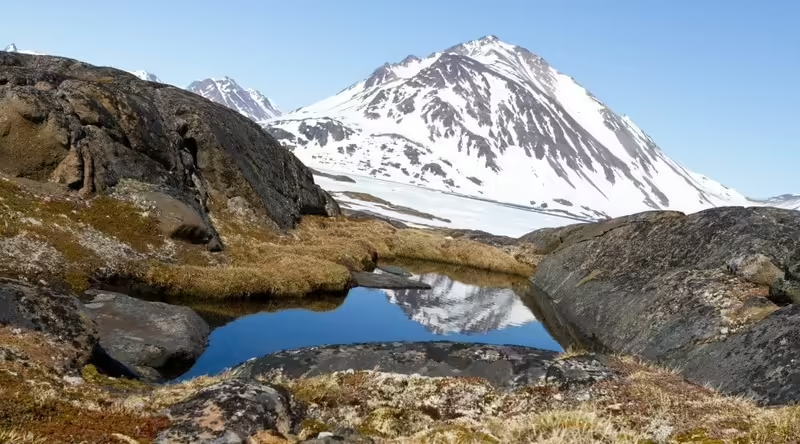The attention of climate scientists around the world is focused on Greenland. Despite much research, little is known about what happened to it during the last ice age. It is not even known when the island froze. After all, accurate models of sea level fluctuation cannot be created without this data. Scientists from the US have re-examined samples taken from a well drilled in the heart of the island 30 years ago.
In 1993, after five years of drilling, scientists on the project Greenland Ice Sheet Project 2 It made its way to the base of a three-kilometer-deep glacier in the Upper Camp area. Since then, samples from the GISP2 well have been stored in Colorado. Scientists from various US scientific institutions, led by the University of Vermont, examined the lower few centimeters of the core and published their results in the journal. PNAS.
Scientists have found traces of organic matter and other signs in the glacial deposits (tails) that convincingly suggest the presence of soil. These are fragments of willow kidney scales, megaspores of thorny moss, poppy seeds, mushroom sclerotia (resting stems), a few pieces of wood that also turned out to be willow. And these were young shoots. The most surprising thing is the remains of insect legs and compound eyes.
It turns out that central Greenland had been free of ice during past warming periods. When they surfaced, the rocks were covered in cold, dry tundra, where snow could remain until summer. Temperatures did not exceed 10 degrees Celsius.
This discovery explained why the samples were high in organic carbon and nitrogen. Enrichment with the cosmogenic isotope beryllium-10 was indicative of long-term exposure to the atmosphere. According to first author Paul Bierman, this date is about a few thousand years. This is enough to create soil in which the ecosystem can take root.
It was not possible to determine the exact age of the tundra. Judging by the ratio of aluminium-26 and beryllium-10 isotopes, it occurred within the last million years. Argon dating showed that the pure ice above was about 250,000 years old. At another point, 30 kilometres away, the old ice was a million years old. In any case, if the ice sheet in the centre of the island melted, so did the rest.
Scientists have piecemealed together the history of the Greenland ice sheet. In 2016, an analysis of the bottom of a core taken from the same borehole showed it was no older than 1.1 million years, but that conclusion has been disputed. In 2019, Bierman and his colleagues examined samples from the borehole.
Camps of the century, selected in the 1960s. The oldest part is 416 thousand years old
branches, seeds, insect fragments were found. It turned out that the ice had melted by then. Taking all the data into account, the “fragile Greenland” hypothesis must be accepted as correct.
Source: Port Altele
